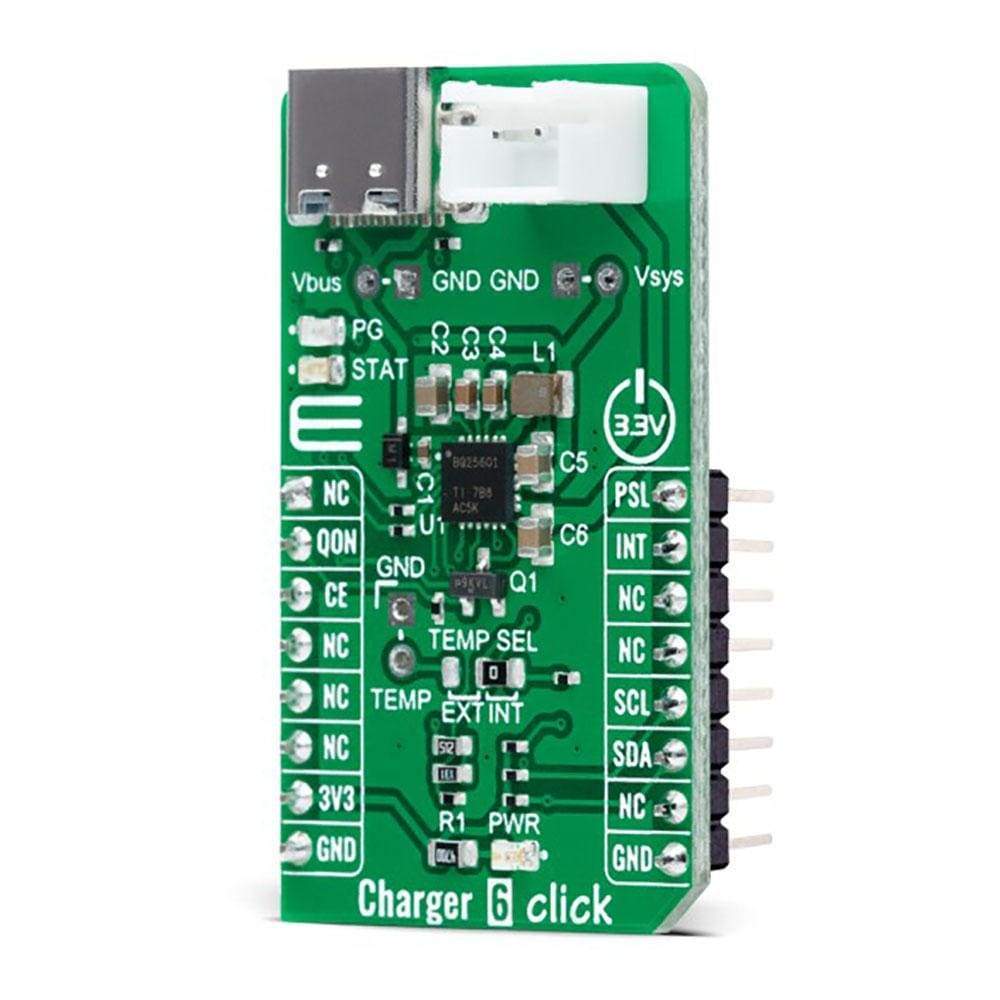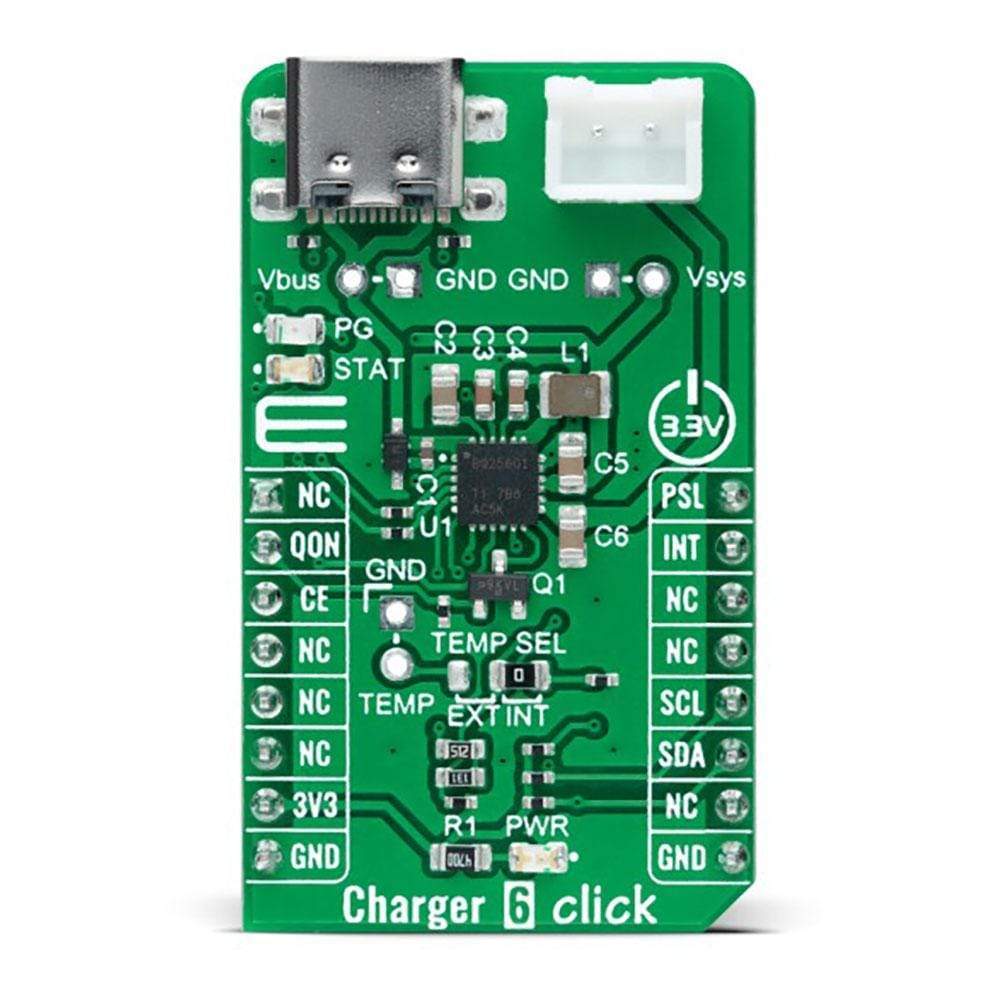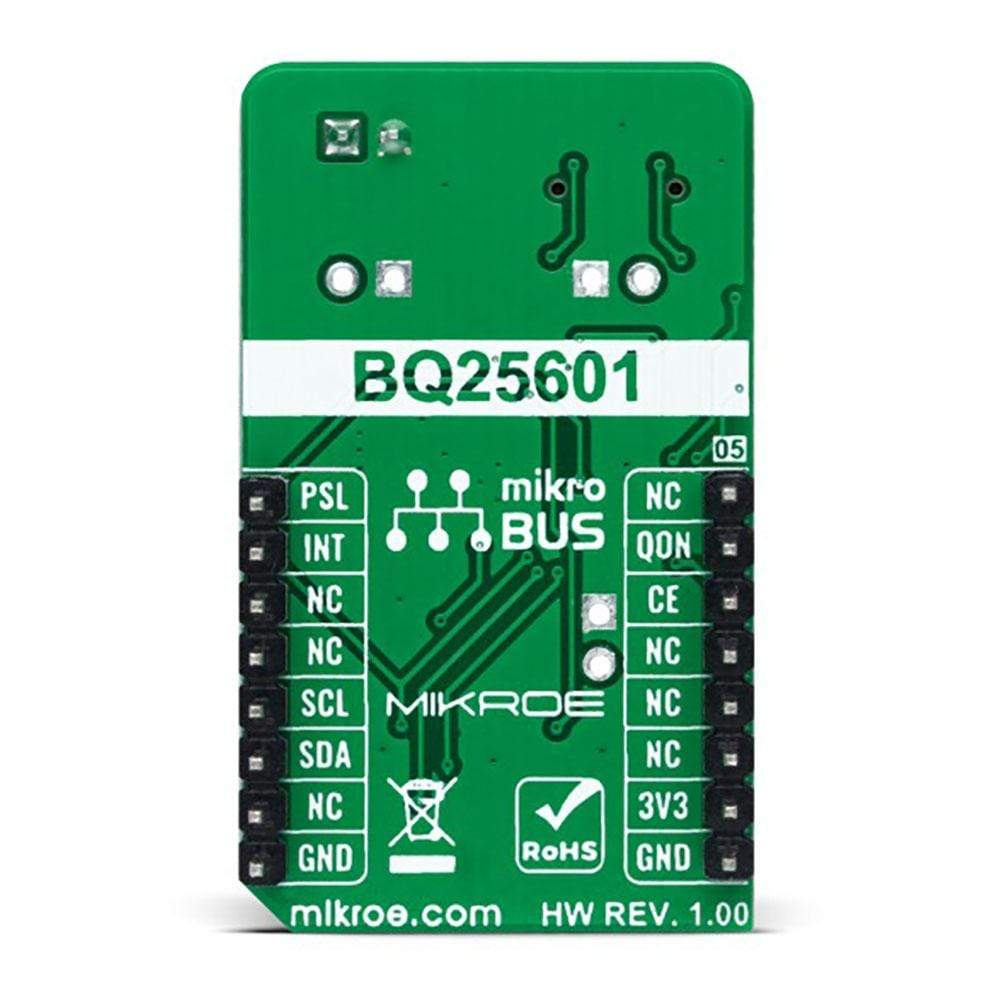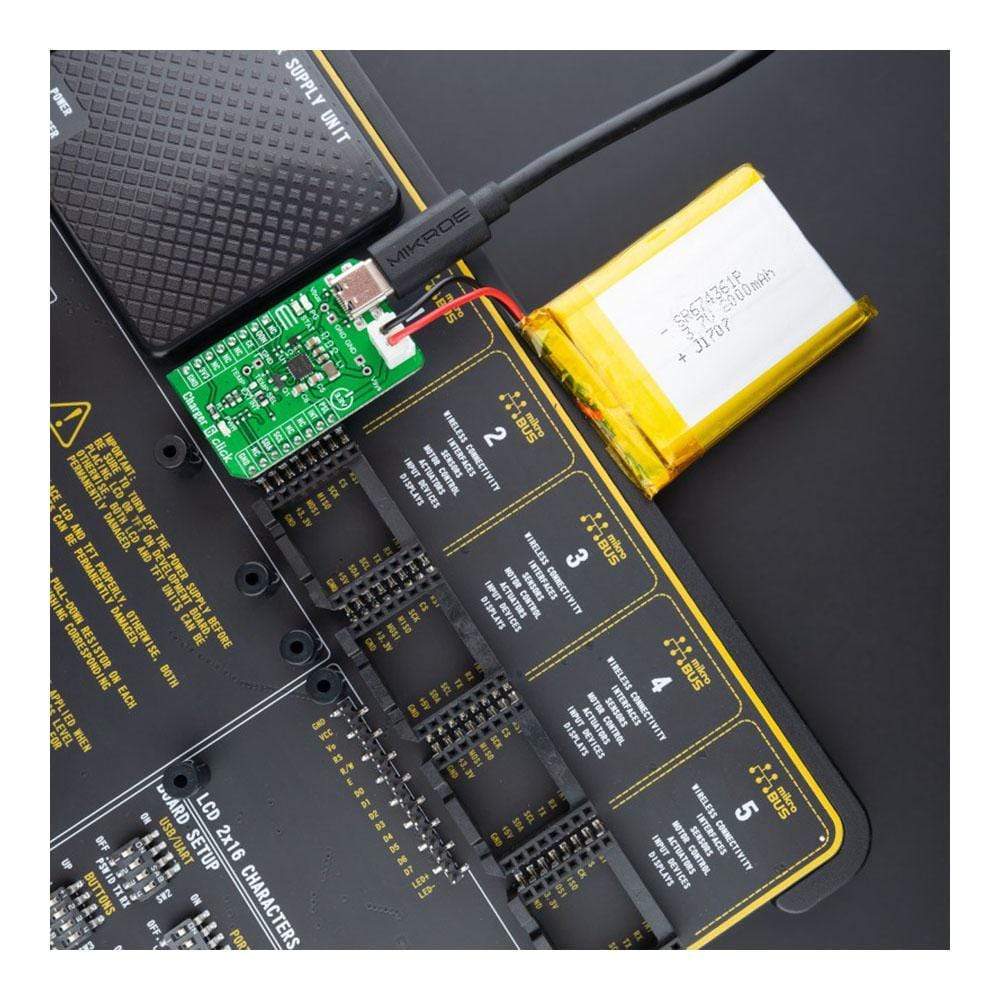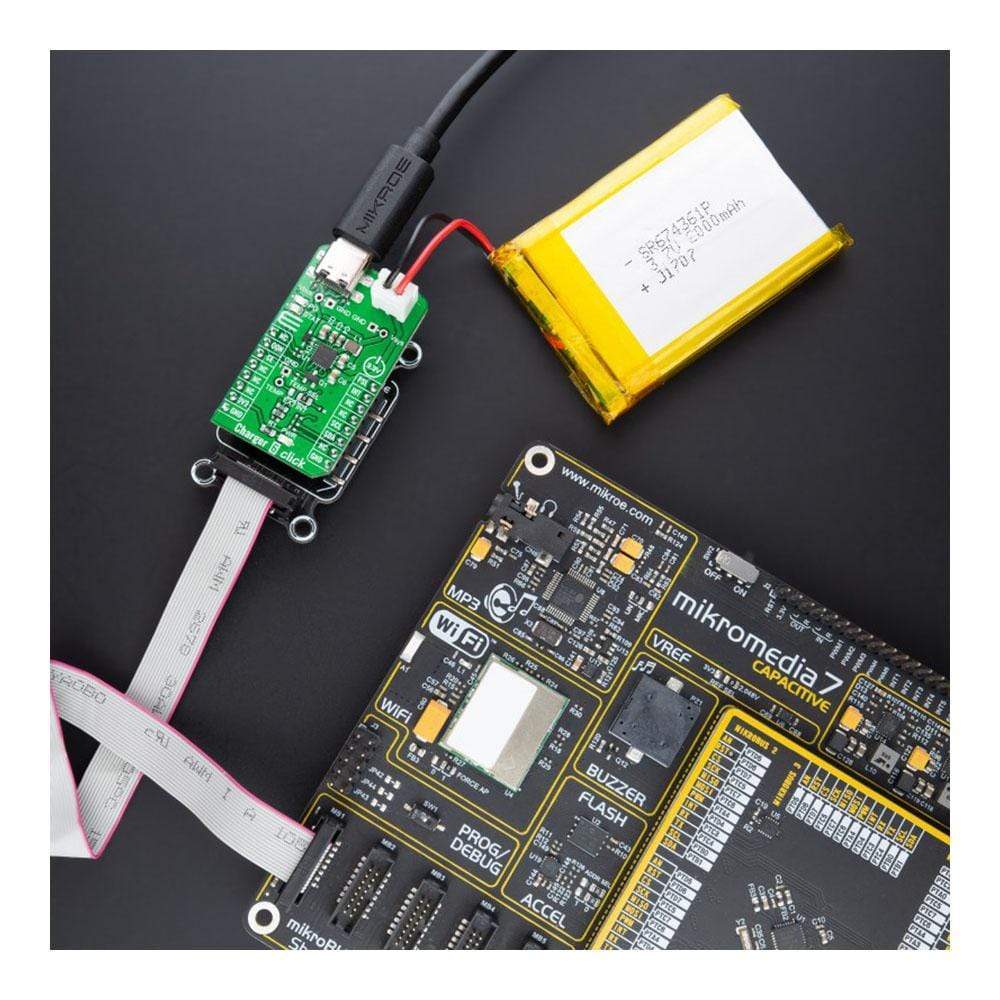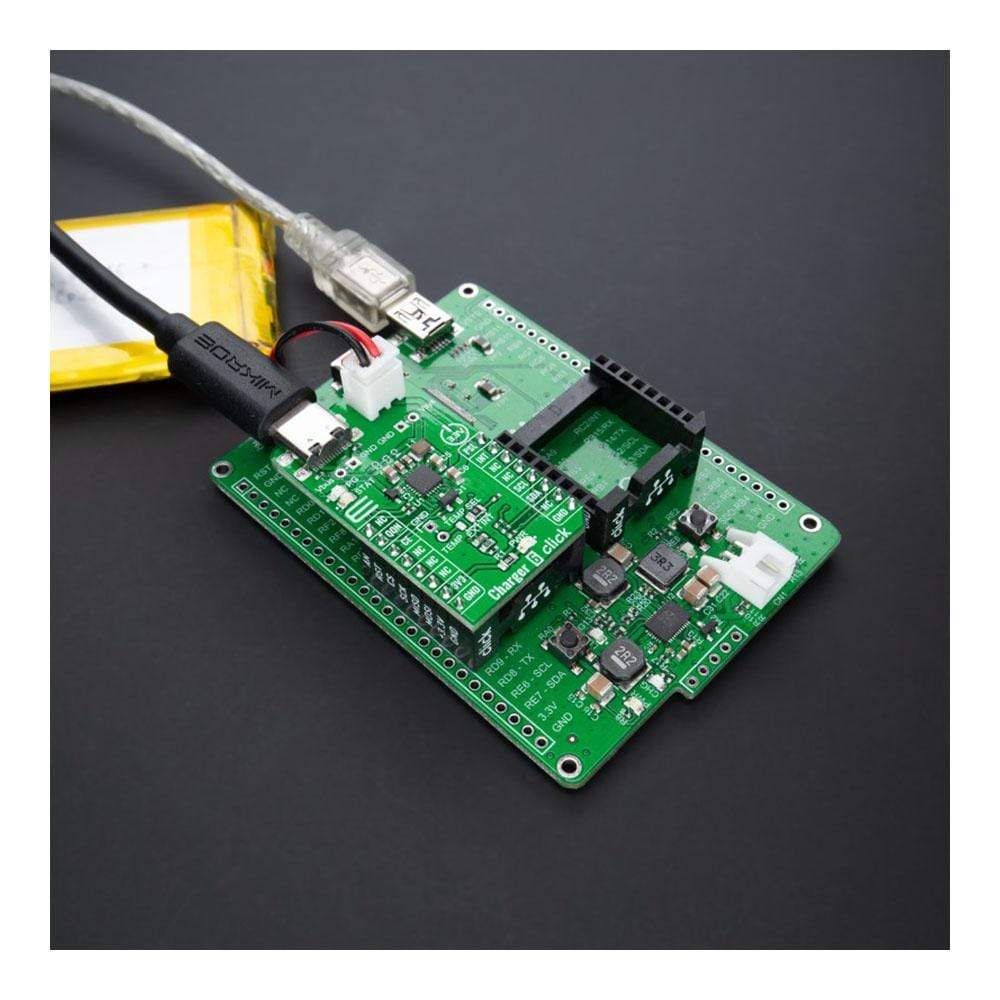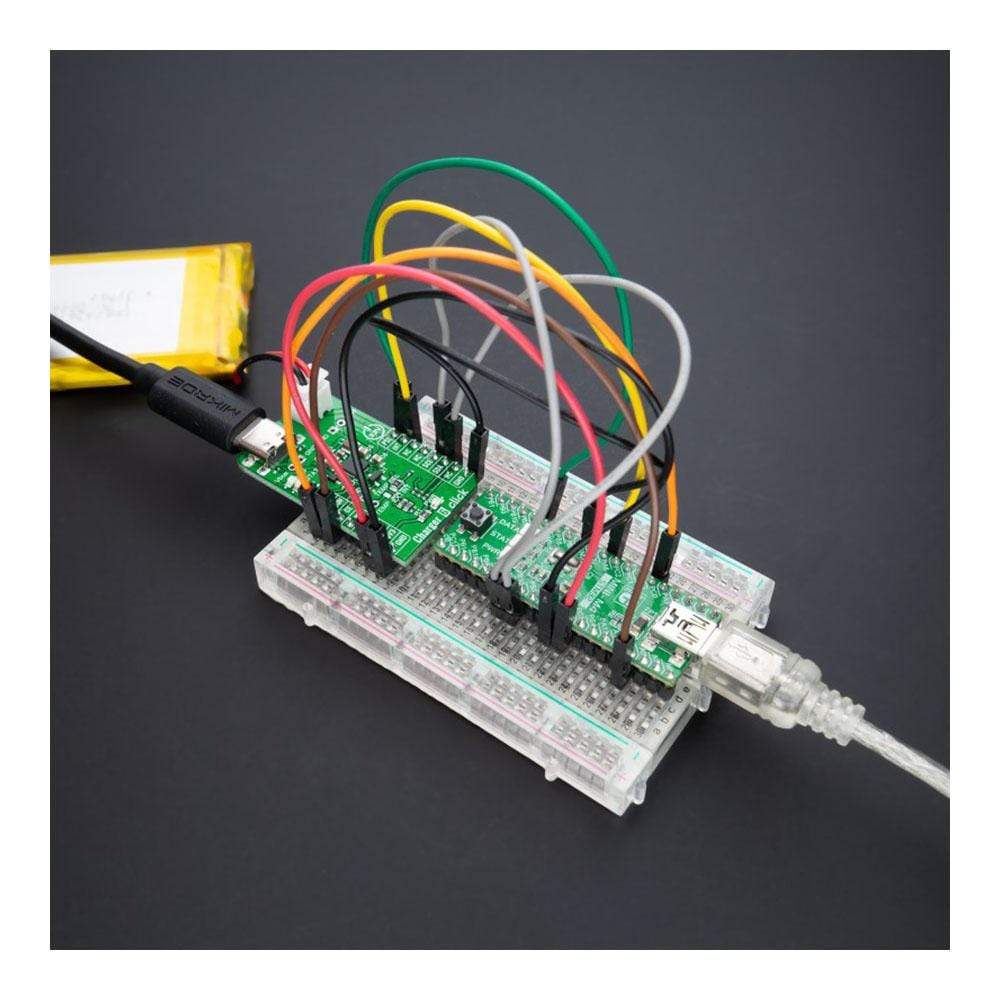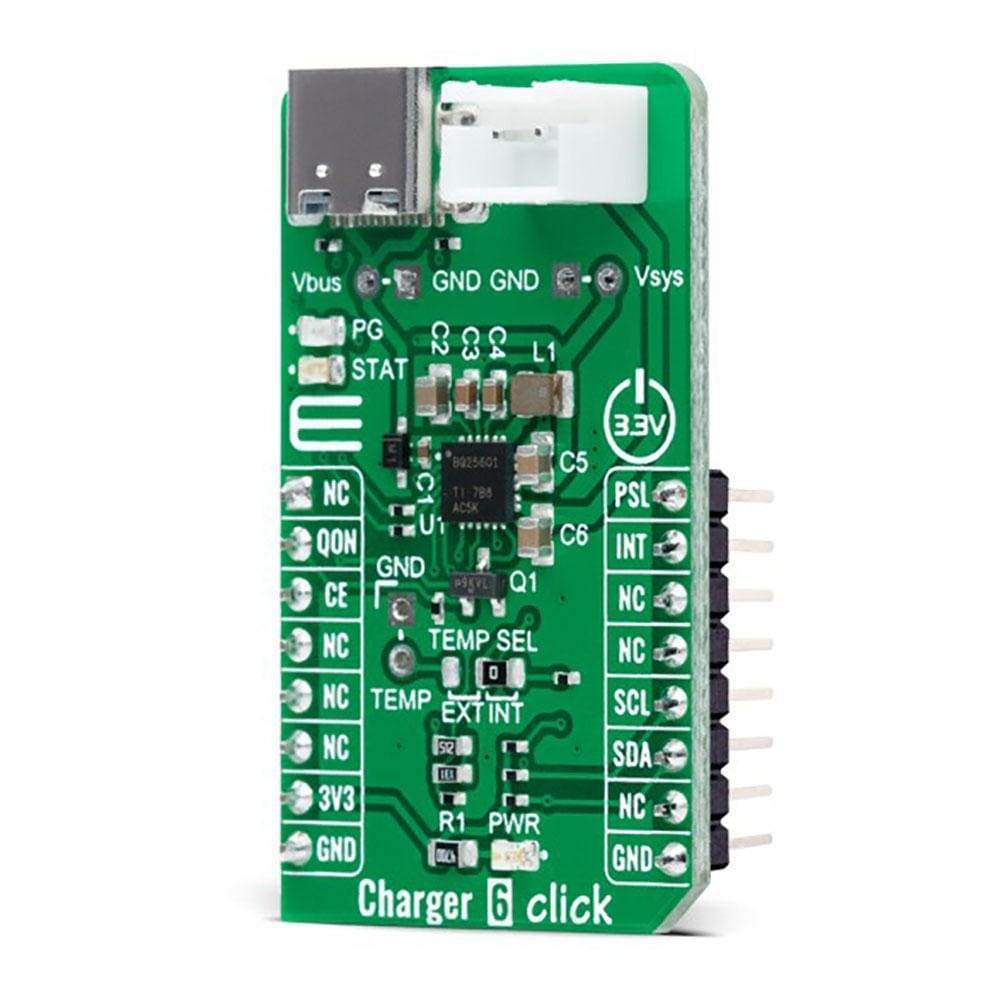
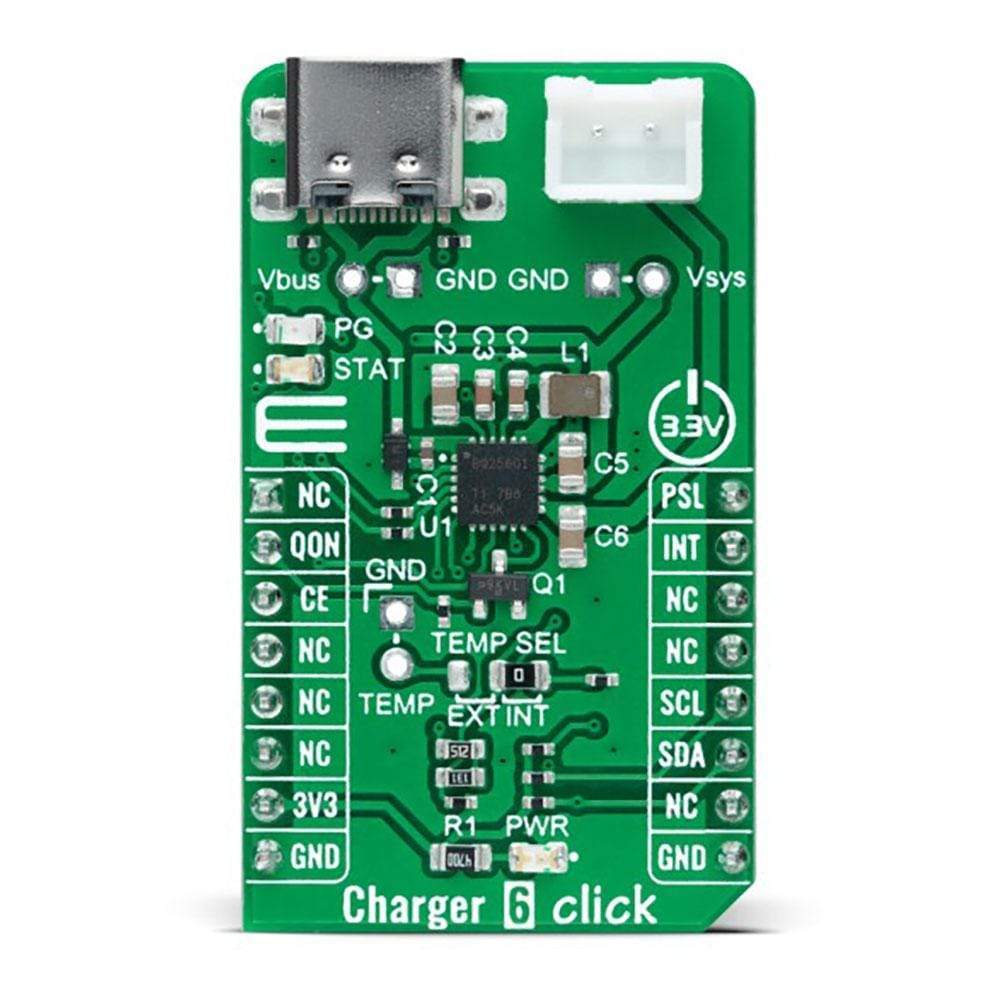
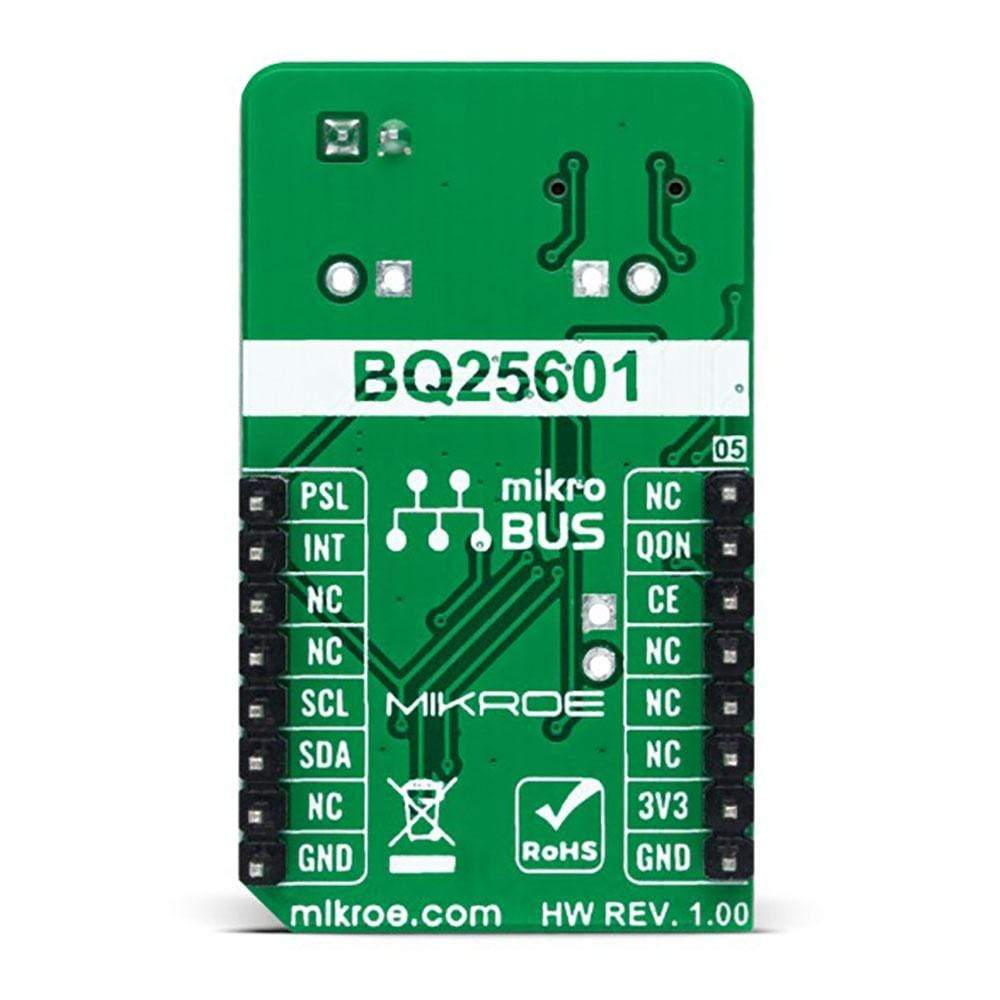
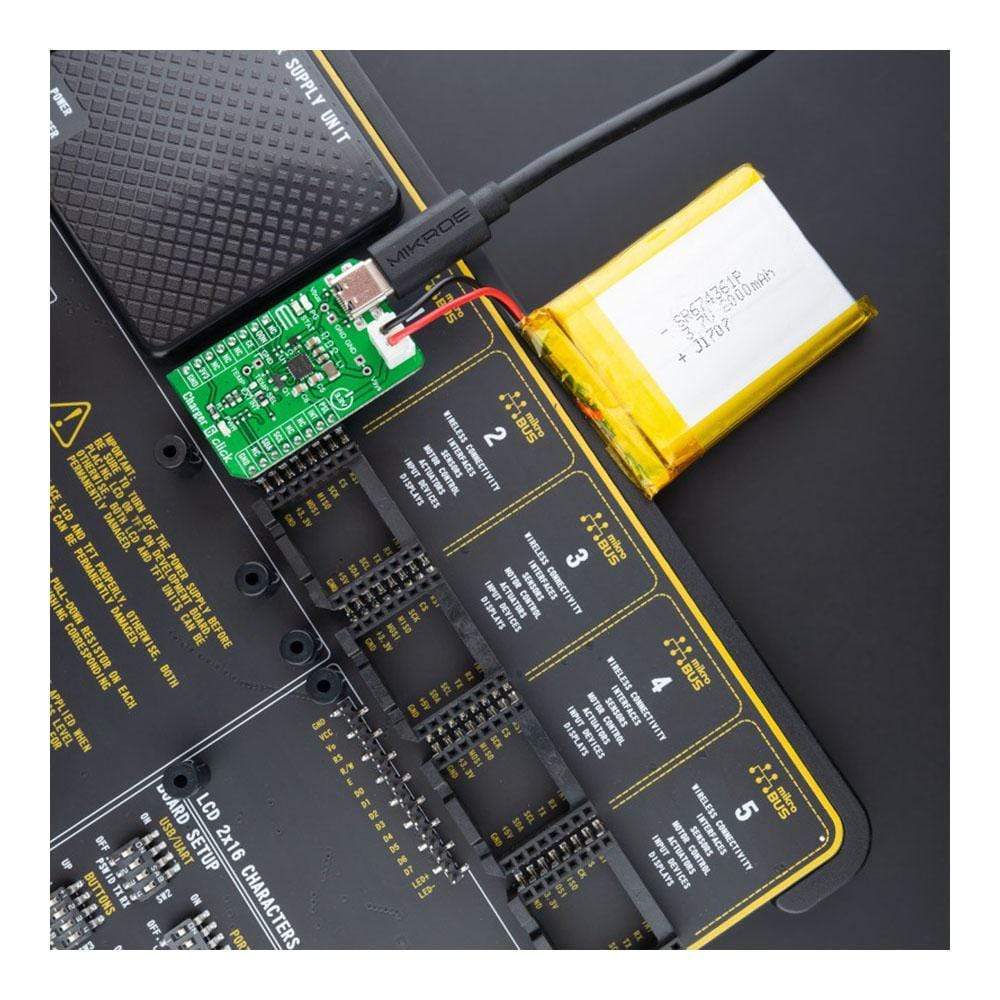
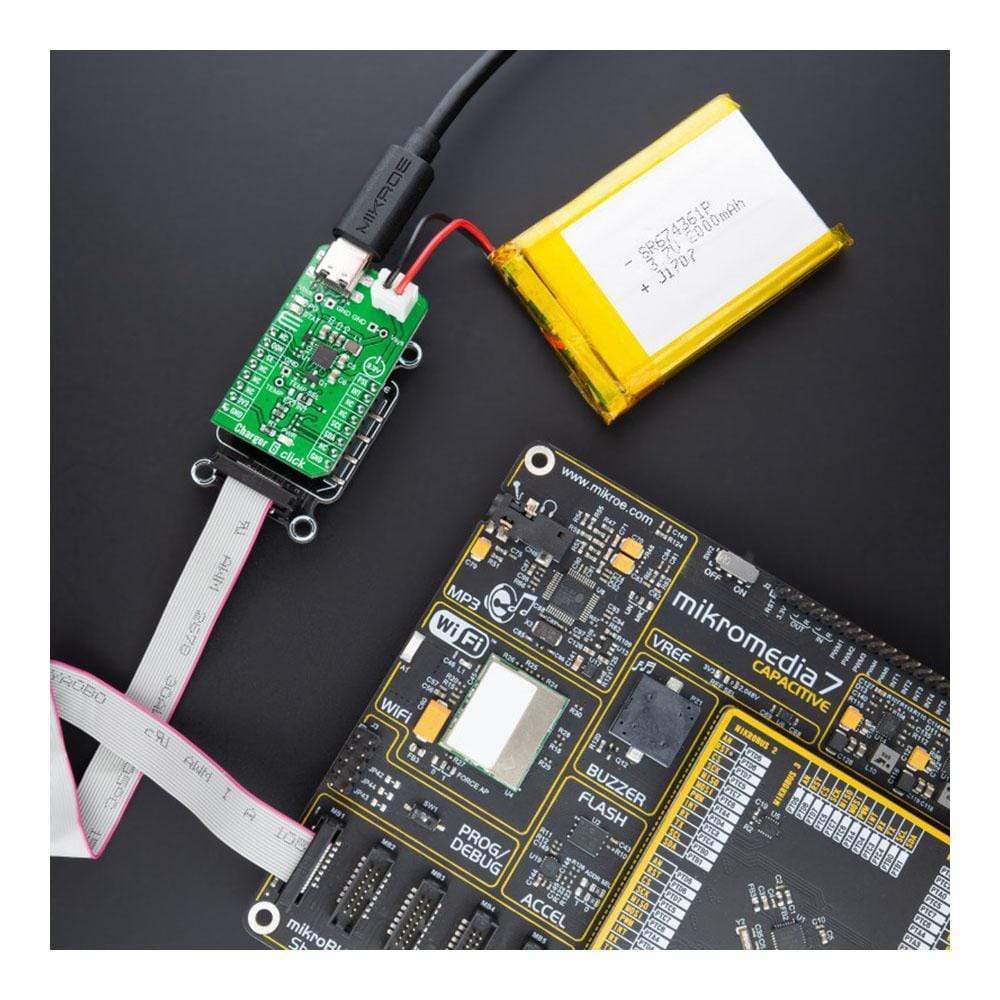
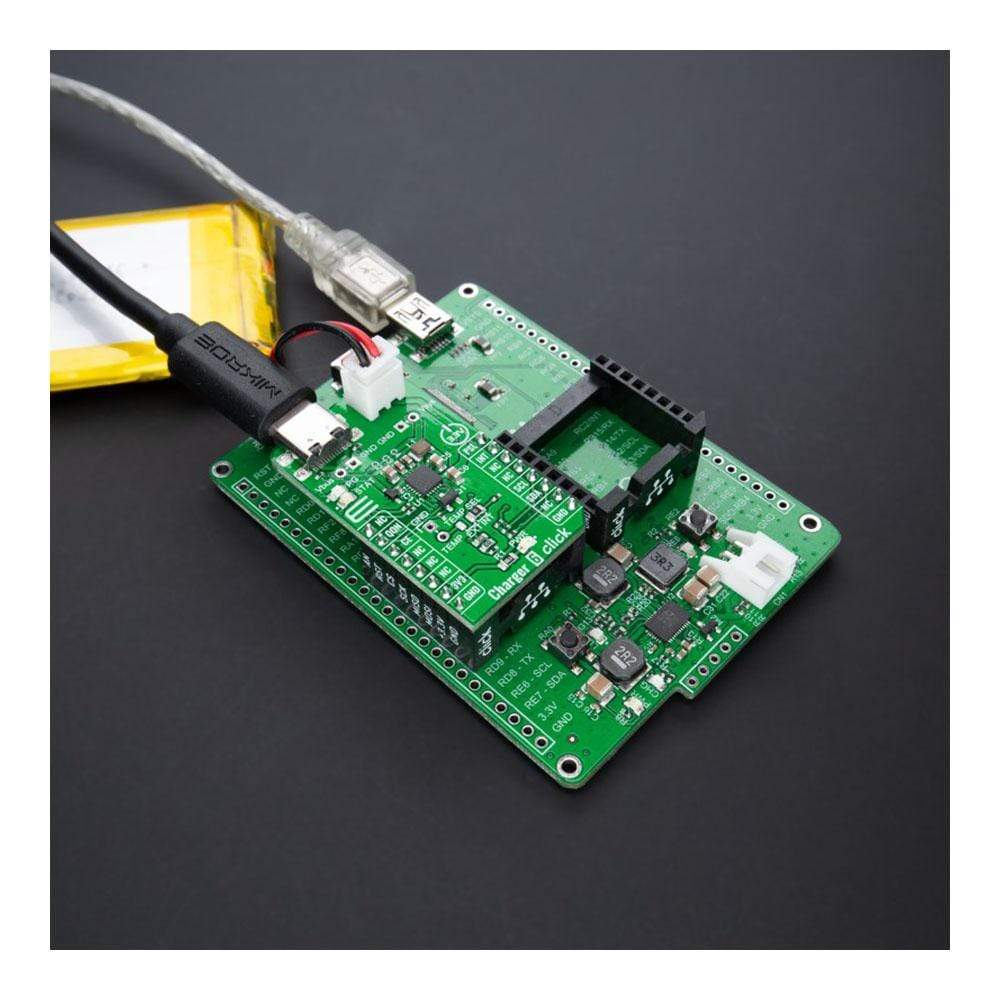
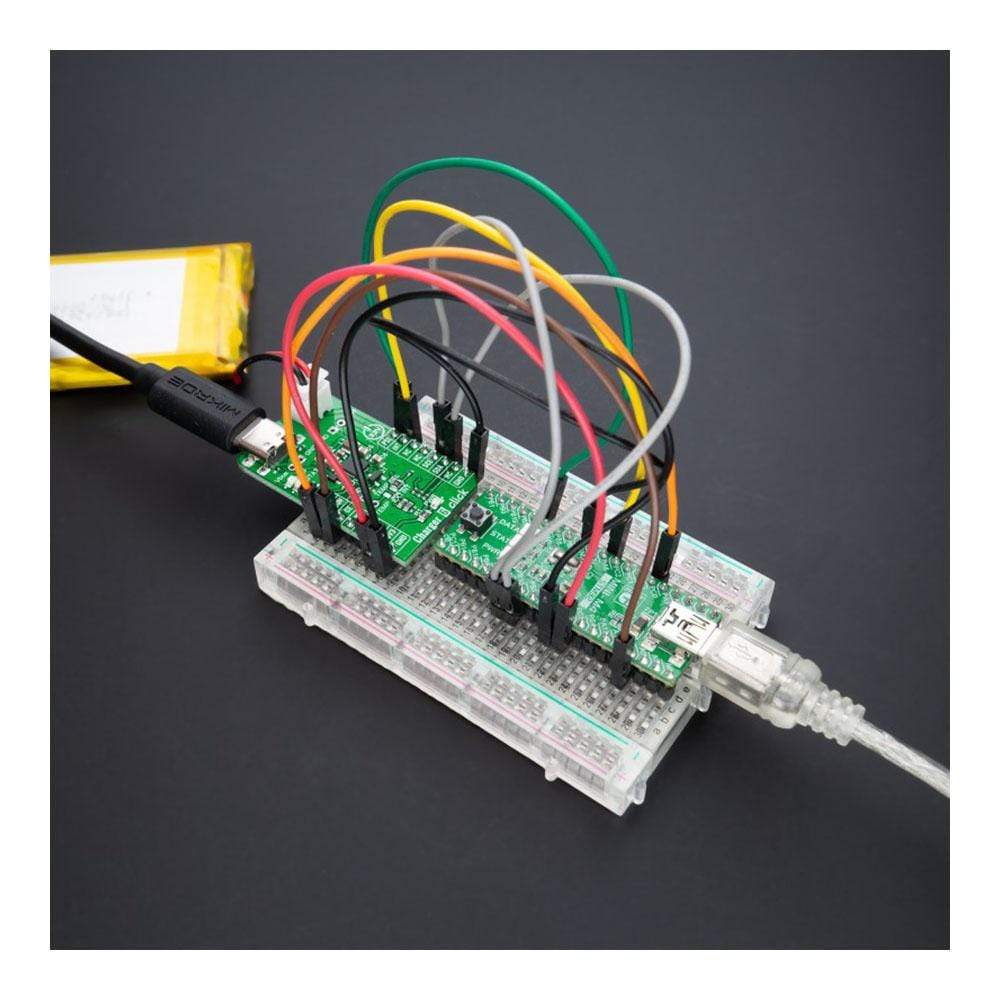
Overview
The Charger 6 Click Board™ is a compact add-on board that represents a single-cell battery charger. This board features the BQ25601, an I2C controlled battery charger for high input voltage and narrow voltage DC power path management from Texas Instruments. This buck charger supports USB, and it’s optimized for USB voltage input. The low impedance power path optimizes switch-mode operation efficiency, reduces battery charging time, and extends battery life during discharge. It also has a programmable current limiting, allowing it to use an external power supply rated up to 13.5V. This Click Board™ is suitable as a Li-Ion and Li-polymer battery charger for portable devices and accessories, power tools, and more.
The Charger 6 Click is supported by a mikroSDK compliant library, which includes functions that simplify software development. This Click Board™ comes as a fully tested product, ready to be used on a system equipped with the mikroBUS™ socket.
Downloads
Das Charger 6 Click Board™ ist eine kompakte Zusatzplatine, die ein Einzelzellen-Akkuladegerät darstellt. Diese Platine verfügt über den BQ25601, ein I2C-gesteuertes Akkuladegerät für hohe Eingangsspannung und schmale DC-Strompfadverwaltung von Texas Instruments. Dieses Abwärtsladegerät unterstützt USB und ist für den USB-Spannungseingang optimiert. Der Strompfad mit niedriger Impedanz optimiert die Effizienz des Schaltbetriebs, verkürzt die Akkuladezeit und verlängert die Akkulebensdauer während der Entladung. Es verfügt außerdem über eine programmierbare Strombegrenzung, sodass es ein externes Netzteil mit einer Nennleistung von bis zu 13,5 V verwenden kann. Dieses Click Board™ eignet sich als Li-Ion- und Li-Polymer-Akkuladegerät für tragbare Geräte und Zubehör, Elektrowerkzeuge und mehr.
Der Charger 6 Click wird durch eine mikroSDK-kompatible Bibliothek unterstützt, die Funktionen enthält, die die Softwareentwicklung vereinfachen. Dieses Click Board™ wird als vollständig getestetes Produkt geliefert und ist bereit für den Einsatz auf einem System, das mit der mikroBUS™-Buchse ausgestattet ist.
| General Information | |
|---|---|
Part Number (SKU) |
MIKROE-4576
|
Manufacturer |
|
| Physical and Mechanical | |
Weight |
0.019 kg
|
| Other | |
Country of Origin |
|
HS Code Customs Tariff code
|
|
EAN |
8606027382321
|
Warranty |
|
Frequently Asked Questions
Have a Question?
Be the first to ask a question about this.

